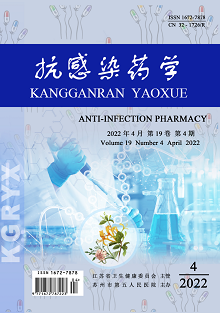HUANG Xiao-jing, QI Xin-kun, DUN Yan-ting, ZHAO Hong-wei, ZHANG Ning, WANG Ai-feng, LIU Xue-lan, LI Bin
Objective: To analyze the distribution and drug resistance characteristics of pathogenic bacteria in respiratory tract specimens from children with postoperative congenital heart disease complicated by lower respiratory tract infection (LRTI), and provide reference for the rational use of antibacterial drugs. Methods: We selected 146 children with postoperative congenital heart disease complicated by LRTI who were admitted to Henan Provincial People's Hospital from January 2018 to December 2020 as study subjects, and conducted statistics and analysis of distribution of pathogenic bacteria and drug resistance of major pathogens in respiratory tract specimens from the children. Results: 151 pathogenic bacteria were isolated from the respiratory tract specimens of 146 children with postoperative complication of LRTI, including 115 Gram-negative bacteria (accounting for 76.16%, mainly Klebsiella pneumoniae, Escherichia coli, Pseudomonas aeruginosa, Acinetobacter baumannii and Enterobacter cloacae) and 36 Gram-positive bacteria (accounting for 23.84%, mainly Streptococcus pneumoniae and Staphylococcus aureus). The drug susceptibility results showed that Klebsiella pneumoniae had a low resistance rate (<30.00%) to amikacin, polymyxin B and tigecycline only, Escherichia coli had a low resistance rate (<10.00%) to cefoperazone-sulbactam sodium, piperacillin-tazobactam sodium, imipenem, meropenem, amikacin, polymyxin B and tigecycline, Enterobacter cloacae had a low resistance rate (≤30.00%) to all tested antimicrobial drugs except cefotaxime, piperacillin and cefoperazone-sulbactam sodium, Pseudomonas aeruginosa had a low resistance rate (<20.00%) to all tested antimicrobial drugs, Acinetobacter baumannii had a low resistance rate (<10.00%) to polymyxin B and tigecycline only, Streptococcus pneumoniae had a low resistance rate (<10.00%) to penicillin, chloramphenicol, levofloxacin, vancomycin and linezolid, and Staphylococcus aureus had a low resistance rate (≤10.00%) to compound sulfamethoxazole, vancomycin, linezolid, teicoplanin, gentamicin and rifampin. Conclusion: The pathogens in children with postoperative congenital heart disease complicated by LRTI are mainly Gram-negative bacteria, with Klebsiella pneumoniae, Escherichia coli and Streptococcus pneumoniae as the main pathogenic bacteria. Clinical multidisciplinary collaboration should be strengthened to clarify pathogenic species and drug resistance characteristics to improve the clinical rational use of antimicrobial drugs.
